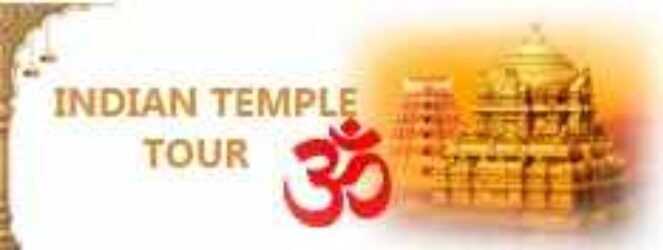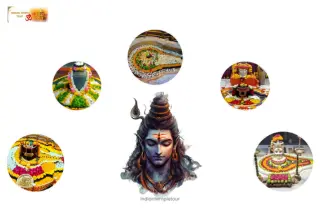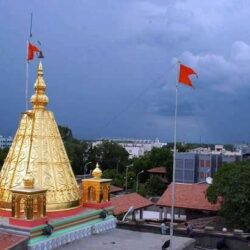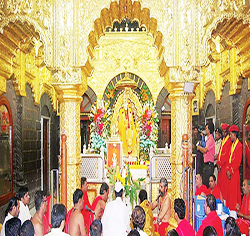Description
Overview of Maharashtra Jyotirlinga Tour Package
India is blessed with many holy shrines, but the Jyotirlingas of Lord Shiva hold a very special place in Hindu spirituality. Out of the twelve Jyotirlingas mentioned in the Shiva Purana, five are located in Maharashtra, making the state one of the most revered destinations for pilgrims.
Our thoughtfully designed Maharashtra Jyotirlinga Tour Package gives devotees the chance to visit these sacred temples with ease, proper guidance, and complete comfort. The package is priced at ₹20,500 per person and spans 06 Nights / 07 Days, covering some of the most important spiritual and cultural spots of the region. Starting from Mumbai, the journey takes you through Grishneshwar, Aurangabad, and the famous Ellora Caves, then onward to Shirdi, Bhimashankar, Pune, Trimbakeshwar, Nashik, and finally Parli Vaijnath.
Whether you choose a shorter 3 Jyotirlinga in Maharashtra Tour or the complete 5 Jyotirlinga Yatra, this pilgrimage ensures not just darshan but also an experience that blends devotion with the cultural heritage of Maharashtra.
Importance of Maharashtra Jyotirlinga Tour
The Maharashtra Jyotirlinga Tour is considered one of the most sacred yatras in Hindu tradition. Each Jyotirlinga has its unique story, spiritual significance, and architectural charm. Visiting these shrines is believed to bring peace, health, prosperity, and liberation from sins.
Undertaking the Pancha Jyotirlinga Yatra not only fulfills spiritual desires but also allows travelers to explore the cultural richness, traditions, and scenic beauty of Maharashtra.
3 Jyotirlinga in Maharashtra Tour Package
If you are short on time but still wish to experience the divine aura of Lord Shiva, the 3 Jyotirlinga in Maharashtra Tour Package is ideal. This pilgrimage usually covers:
- Bhimashankar Jyotirlinga – Situated near Pune, surrounded by lush forests and wildlife sanctuaries, this temple is one of the most visited shrines in Maharashtra.
- Trimbakeshwar Jyotirlinga – Located near Nashik, it is believed to be the origin of the holy River Godavari and is highly revered for its religious importance.
- Grishneshwar Jyotirlinga – Situated near the Ellora Caves, this temple is known for its ancient architecture and deep spiritual significance.
This short Maharashtra Jyotirlinga Trip is perfect for devotees seeking blessings within a 2–3 day journey.
5 Jyotirlinga in Maharashtra Tour Package
For those who wish to complete the divine circuit, the 5 Jyotirlinga in Maharashtra Tour Package covers all five sacred shrines in the state:
- Bhimashankar Jyotirlinga – Situated near Pune, surrounded by lush forests and wildlife sanctuaries, this temple is one of the most visited shrines in Maharashtra.
- Trimbakeshwar Jyotirlinga – Located near Nashik, it is believed to be the origin of the holy River Godavari and is highly revered for its religious importance.
- Grishneshwar Jyotirlinga – Situated near the Ellora Caves, this temple is known for its ancient architecture and deep spiritual significance.
- Aundha Nagnath Jyotirlinga – Located in Hingoli district, it is believed to be the first Jyotirlinga worshipped by Lord Rama during his exile.
- Parli Vaijnath Jyotirlinga – Situated in Beed district, this temple is considered powerful for healing and fulfilling wishes.
Completing the Pancha Jyotirlinga Yatra is believed to grant devotees spiritual liberation and divine blessings from Lord Shiva. This journey typically takes 5–6 days, allowing enough time for darshan, rituals, and rest.
Maharashtra Jyotirlinga Yatra – A Spiritual and Cultural Journey
The Maharashtra Jyotirlinga Yatra is not only about temple visits but also about experiencing the cultural and spiritual heritage of the state. Along the way, travelers can explore several other religious and historical attractions, such as:
- Shirdi Sai Baba Temple – One of the most famous spiritual destinations in India.
- Ellora and Ajanta Caves – UNESCO World Heritage Sites showcasing ancient Indian art and architecture.
- Shani Shingnapur Temple – A unique temple where no doors or locks are used, as it is believed Lord Shani protects the village.
By combining pilgrimage with cultural sightseeing, this Maharashtra Jyotirlinga Trip becomes a fulfilling experience for devotees and families alike.
Why Choose Our Maharashtra Jyotirlinga Tour Package?
We understand that pilgrimage is not just a journey but a sacred experience. Our Maharashtra Jyotirlinga Tour Packages are carefully curated to ensure comfort, convenience, and devotion at every step.
- Comfortable Transportation – AC coaches and private vehicles for smooth travel.
- Clean Accommodation – Hotels and guesthouses near temples for easy access.
- Vegetarian Meals – Traditional food options prepared for devotees.
- Guided Assistance – Experienced tour managers and guides to assist at temples.
- Customizable Packages – Options for 3 Jyotirlinga or 5 Jyotirlinga yatra as per your schedule.
- Affordable Pricing – Well-planned packages to suit different budgets.
- Choose a Starting Point – Tours are available from cities like Bangalore, Delhi, and Pune, with packages tailored to your location.
With our expertise, you can focus on your devotion while we take care of all arrangements.
Best Time for Maharashtra Jyotirlinga Trip
The Jyotirlingas of Maharashtra can be visited throughout the year, but certain times are considered more auspicious and comfortable:
- Shravan Month (July–August) – Highly sacred for Lord Shiva worship.
- Maha Shivratri – Ideal time to witness grand celebrations and rituals.
- October to March – Pleasant weather for travel and sightseeing.
Planning your Maharashtra Jyotirlinga Tour Package during these months ensures a spiritually uplifting and comfortable experience.
Pancha Jyotirlinga Yatra – The Complete Divine Experience
The Pancha Jyotirlinga Yatra in Maharashtra is considered one of the most powerful pilgrimages. Visiting all five temples is believed to wash away past sins, bring prosperity, and strengthen faith in Lord Shiva. Devotees from across India and abroad undertake this sacred journey every year.
Our carefully designed Maharashtra Jyotirlinga Yatra Packages ensure that pilgrims can complete this divine circuit with ease, devotion, and peace of mind.
Conclusion
Undertaking the Maharashtra Jyotirlinga Tour Package is more than just a journey – it is a path of devotion, faith, and spiritual awakening. Whether you choose the short 3 Jyotirlinga in Maharashtra Tour Package or the complete 5 Jyotirlinga in Maharashtra Yatra, you will experience divine blessings and inner peace.
Book your Maharashtra Jyotirlinga Trip today and be a part of the sacred Pancha Jyotirlinga Yatra that connects you to the eternal power of Lord Shiva. With our expert planning, comfortable travel, and devotional guidance, your pilgrimage will become a truly memorable and life-changing experience.
Maharashtra Jyotirlinga Tour Package |
|
|---|---|
| Tour Name: | Maharashtra Jyotirlinga Tour Package |
| Tour Duration: | 06 Night / 07 Days |
| Destinations Covered: | Mumbai- Grishneshwar – Aurangabad- Ellora Caves – Shirdi- Bhimashankar – Pune- Triambakeshwar – Nashik- Parli Vaijnath . |
| Tour Price: | 20,500/- Per Person (Min- 6 person applicable) |
Itinerary
Day 01:Arrival in Mumbai
- Arrive in Mumbai, the financial capital of India.
- Meet your tour representative and check-in to your hotel.
- Rest and relax after your journey.
Day 02: Mumbai – Grishneshwar – Aurangabad
- After breakfast, proceed to Grishneshwar, which is about a 6-7 hour drive from Mumbai.
- Visit the Grishneshwar Jyotirlinga temple, dedicated to Lord Shiva.
- After darshan, drive to Aurangabad, a historical city known for its rich heritage.
- Check-in to your hotel and spend the evening at leisure.
Day 03: Aurangabad – Ellora Caves – Shirdi
- After breakfast, visit the famous Ellora Caves, a UNESCO World Heritage site known for its rock-cut temples and monasteries.
- Explore the Kailasa Temple, which is dedicated to Lord Shiva and is considered one of the largest monolithic structures in the world.
- Later, proceed to Shirdi, the abode of Sai Baba, which is about a 3-4 hour drive from Aurangabad.
- Check-in to your hotel in Shirdi and rest for the day.
Day 04: Shirdi – Bhimashankar – Pune
- Early morning, visit the famous Sai Baba Temple and attend the morning aarti (prayer).
- After darshan, proceed to Bhimashankar, which is about a 4-5 hour drive from Shirdi.
- Visit the Bhimashankar Jyotirlinga temple, dedicated to Lord Shiva, located amidst the lush green forests of the Sahyadri mountains.
- After darshan, drive to Pune, a bustling city known for its history and culture.
- Check-in to your hotel in Pune and spend the evening at leisure.
Day 05: Pune – Triambakeshwar – Nashik
- After breakfast, proceed to Triambakeshwar, which is about a 4-5 hour drive from Pune.
- Visit the Triambakeshwar Jyotirlinga temple, located in the town of Trimbak near Nashik, known for its unique three-faced lingam representing Lord Brahma, Lord Vishnu, and Lord Shiva.
- After darshan, drive to Nashik, a holy city known for its temples and Kumbh Mela.
- Check-in to your hotel in Nashik and rest for the day.
Day 06: Nashik – Parli Vaijnath – Pune
- After breakfast, proceed to Parli Vaijnath, which is about a 6-7 hour drive from Nashik.
- Visit the Parli Vaijnath Jyotirlinga temple, dedicated to Lord Shiva, located in the Beed district of Maharashtra.
- After darshan, drive back to Pune.
- Check-in to your hotel in Pune and spend the evening at leisure.
Day 07: Pune – Departure
- After breakfast, check-out from your hotel in Pune.
- Proceed to Mumbai for your onward journey or departure from Mumbai airport/railway station.
Price
Call for Best Deal: +91 9870240354
Hotels Details:
Call for Best Deal: +91 9870240354
Inclusions
- Pick up and drop from airport/railway/bus station.
- Accommodation on double/twin sharing basis.
- All breakfast included at hotels.
- All transfers and sightseeing by private A/C vehicle.
- Driver’s bata, toll, parking, road tax, fuel charges All applicable taxes.
Exclusion
- Service Tax – 5% GST Extra.
- Any air/bus/rail fare Any other meals not mentioned in package inclusions.
- Any other destination not mentioned in itinerary.
- Any personal expenses such as laundry, room service, mini bar, telephone etc.
- Guide charges/boating charges/entrance fees for any sightseeing
- Any services or activity charges other than those included in inclusions.
- Supplementary cost for festival period, long weekend or peak season .
FAQs
Q1: Which Jyotirlinga temples are included in the Maharashtra Jyotirlinga Tour Package?
The Maharashtra Jyotirlinga Tour Package includes the following Jyotirlinga temples:
1. Bhimashankar Jyotirlinga in Pune
2. Grishneshwar Jyotirlinga in Aurangabad
3. Trimbakeshwar Jyotirlinga in Nashik
Q2: What is the significance of Bhimashankar Jyotirlinga?
Bhimashankar Jyotirlinga is one of the 12 Jyotirlinga temples dedicated to Lord Shiva. It is believed to be the place where Lord Shiva appeared in the form of Bhima and defeated the demon Tripurasura. The temple is surrounded by the scenic beauty of the Sahyadri Mountains and offers a tranquil spiritual experience.
Q3: What is the significance of Grishneshwar Jyotirlinga?
Grishneshwar Jyotirlinga is an ancient temple dedicated to Lord Shiva and is considered one of the holiest places in Maharashtra. It is believed to be the abode of Lord Shiva in the form of Grishneshwar, meaning “lord of compassion.” The temple’s architectural beauty and serene surroundings attract devotees and tourists alike.
Q4: What is the significance of Trimbakeshwar Jyotirlinga?
Trimbakeshwar Jyotirlinga is one of the most prominent Jyotirlinga temples in India. It holds immense religious significance and is believed to be the origin of the sacred Godavari River. The temple is dedicated to Lord Shiva and is known for its distinct architecture and spiritual ambiance.
Q5: How long does the Maharashtra Jyotirlinga Tour Package usually last?
The duration of the Maharashtra Jyotirlinga Tour Package may vary depending on the specific package and the itinerary chosen. It is advisable to check with the tour operator or refer to the package details to determine the exact duration of the tour.
Q6: Are accommodation and transportation included in the Maharashtra Jyotirlinga Tour Package?
Yes, the Maharashtra Jyotirlinga Tour Package generally includes accommodation and transportation. The package may offer different accommodation options such as hotels, guesthouses, or resorts, depending on your preferences and budget. Transportation between the Jyotirlinga temples and other attractions is usually provided for a hassle-free travel experience.
Q7: Can I customize the Maharashtra Jyotirlinga Tour Package?
Yes, many tour operators provide customization options for the Maharashtra Jyotirlinga Tour Package. You can discuss your preferences, such as the duration of the tour, specific attractions to visit, accommodation preferences, and any additional requirements with the tour operator. They can tailor the package to suit your needs and provide a personalized experience.
Q8: Is it necessary to have prior knowledge or experience of Hindu rituals to visit the Jyotirlinga temples?
No, it is not necessary to have prior knowledge or experience of Hindu rituals to visit the Jyotirlinga temples. The temples welcome visitors of all faiths and backgrounds. However, it is recommended to familiarize yourself with the basic customs and etiquette followed in the temples to show respect and maintain the sanctity of the sacred places.
Q9: What is the best time to visit the Jyotirlinga temples in Maharashtra?
The Jyotirlinga temples in Maharashtra can be visited throughout the year. However, the months of October to March are generally considered the best time to visit as the weather is pleasant during this period. It is advisable to check the local weather conditions and any specific temple festivals or events before planning your visit.
Q10: Are there any dress code requirements for visiting the Jyotirlinga temples?
Yes, most Jyotirlinga temples in Maharashtra have a dress code that requires visitors to dress modestly and respectfully. It is recommended to wear traditional attire or decent clothing that covers the shoulders and knees. Additionally, removing footwear before entering the temple premises is a common practice.





